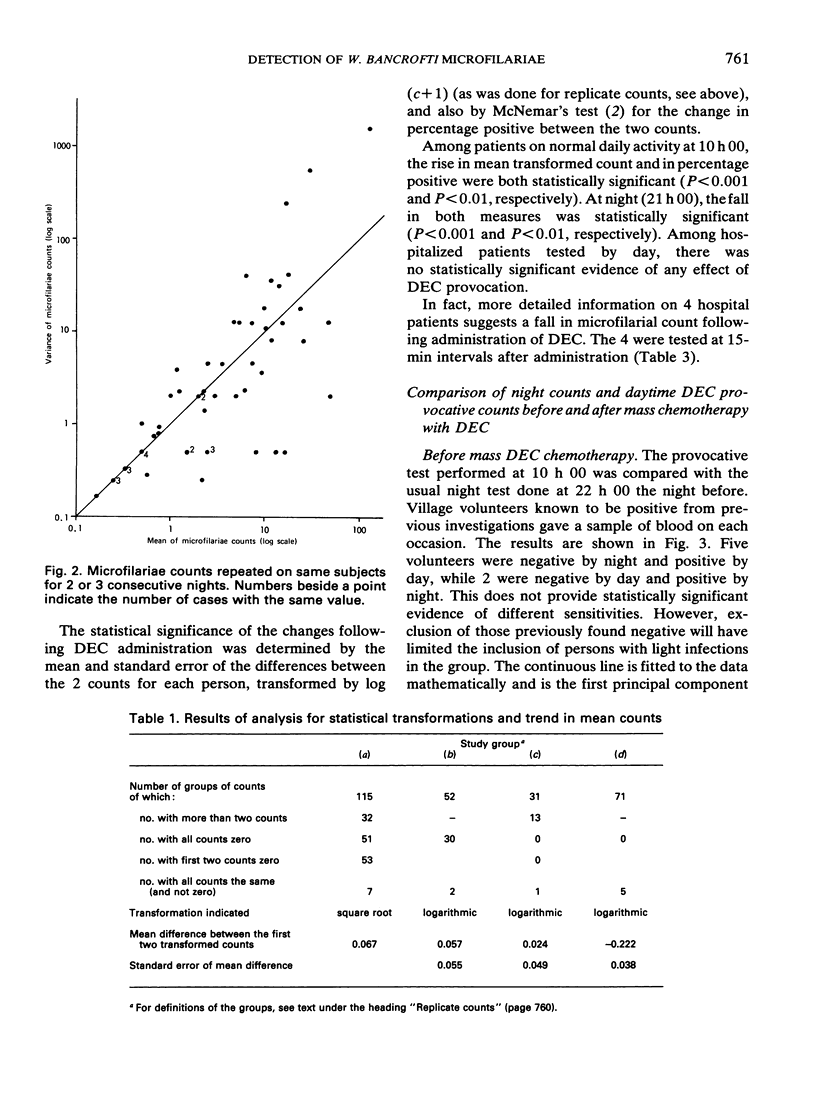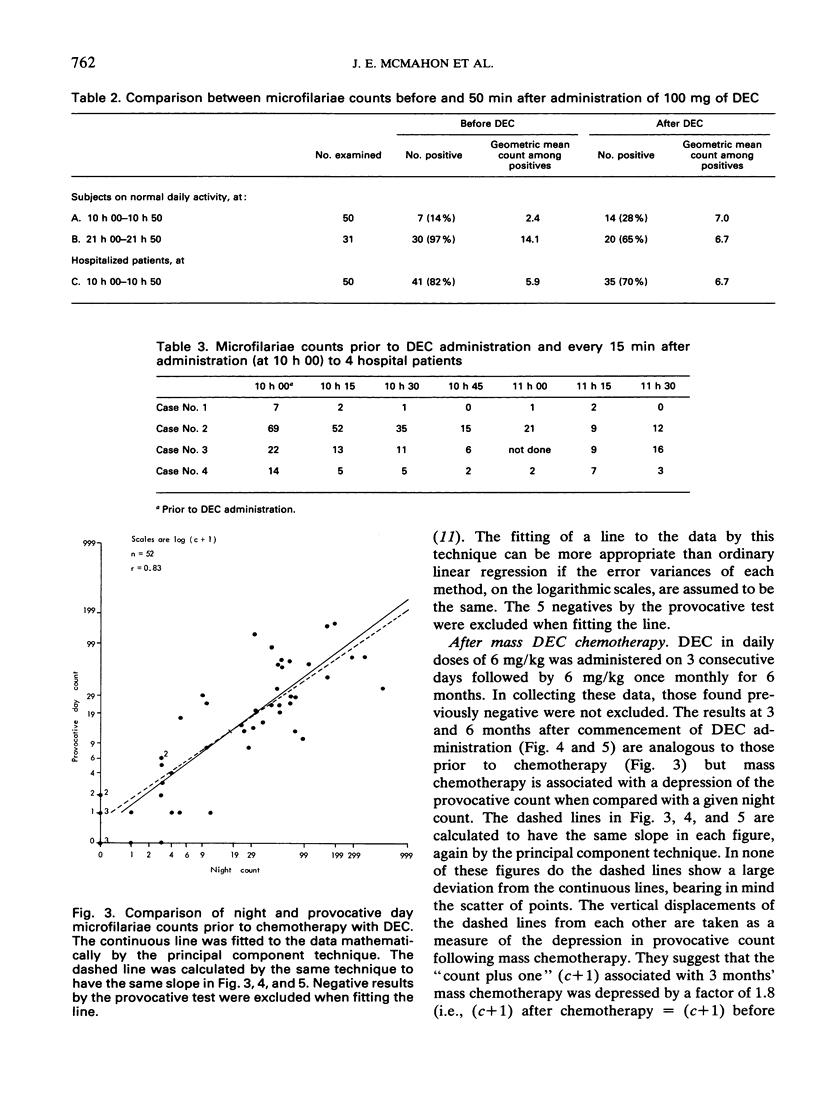Abstract
In coastal Tanzania, an area where the microfilariae (mf) of Wuchereria bancrofti exhibit nocturnal periodicity, the administration of 2 mg diethylcarbamazine (DEC) per kg body weight in the daytime provoked mf to enter the peripheral blood. In persons on normal daily activities the daytime DEC provocative method proved to be as sensitive in detecting microfilaraemia as was the examination of night blood. Its use in routine surveys is therefore justified. Although mf densities by day and night were highly correlated (r = 0.83) they tended to be lower after provocative daytime DEC than in the corresponding night blood, except in very light infections. This method was also useful in assessing the parasitological response to mass chemotherapy with DEC, but, in comparison with the results of the night blood examinations, the sensitivity and magnitude of the counts in persons remaining positive progressively decreased as the period of DEC administration increased. A correction factor has to be calculated to take account of this, and/or additional night blood samples must be taken.
The dose of 2 mg of DEC per kg body weight used was readily acceptable to the people in coastal East Africa, whose cooperation is difficult to obtain for night blood surveys. Apart from W. bancrofti, the only human filarial infection occasionally encountered in this area was Dipetalonema perstans. Because of the risk of a severe Mazzotti reaction the test is contraindicated in onchocerciasis endemic regions. Severe reactions may also occur in subjects with loaiasis.
Full text
PDF






Selected References
These references are in PubMed. This may not be the complete list of references from this article.
- Denham D. A., Dennis D. T., Ponnudurai T., Nelson G. S., Guy F. Comparison of a counting chamber and thick smear methods of counting microfilariae. Trans R Soc Trop Med Hyg. 1971;65(4):521–526. doi: 10.1016/0035-9203(71)90163-5. [DOI] [PubMed] [Google Scholar]
- HAWKING F., ADAMS W. E. MICROFILARICIDAL ACTION OF DIETHYLCARBAMAZINE IN VIVO: FIRST PHASE. Ann Soc Belges Med Trop Parasitol Mycol. 1964;44:278–283. [PubMed] [Google Scholar]
- SASA M., OSHIMA T., SATO K., MITSUI G., SUGATA F., NISHI S., YAMAMOTO H., TADA I., MOTOI E. STUDIES ON EPIDEMIOLOGY AND CONTROL OF FILARIASIS: OBSERVATIONS ON THE CARRIERS OF WUCHERERIA BANCROFTI IN THE AMAMI ISLANDS WITH SPECIAL REFERENCE TO THE EFFECTS AND SIDE-REACTIONS OF DIETHYLCARBAMAZINE. Jpn J Exp Med. 1963 Aug;33:213–243. [PubMed] [Google Scholar]
- Wijers D. J. Bancroftian filariasis in Kenya I. Prevalence survey among adult males in the Coast Province. Ann Trop Med Parasitol. 1977 Sep;71(3):313–331. [PubMed] [Google Scholar]


